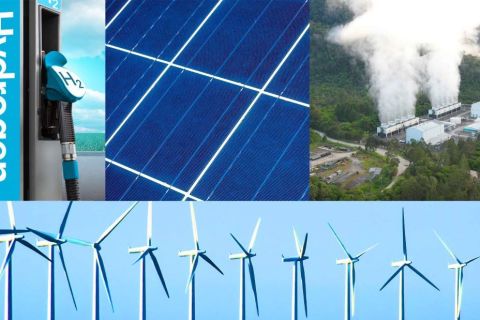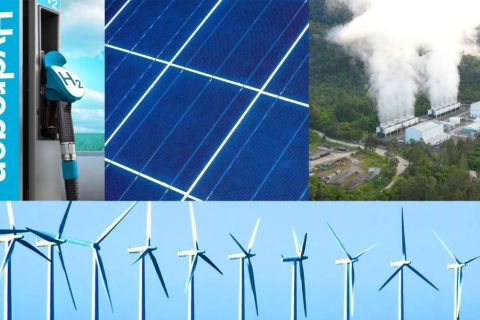It's an exciting race as energy master limited partnerships (MLPs) dash to capitalize on record spreads in North American commodity prices. On one track, pipeline MLPs are contending to reduce regional differences in crude oil prices, especially West Texas Intermediate (WTI) in the Midcontinent, which trades at a historic $20-plus discount to Light Louisiana Sweet (LLS) oil in the Gulf Coast.
On the other track, gathering and processing MLPs are vying to profit from comparable spreads between depressed natural gas prices and the premium prices of natural gas liquids (NGLs).
The biggest contender is TransCanada Corp.'s planned $7-billion Keystone XL Pipeline to transport 500,000 to 700,000 barrels (bbl.) per day of mostly Canadian crude, and, to a smaller extent, crude oil from North Dakota, to refineries in Port Arthur, Texas. Keystone XL is expected to become operational by 2013, pending approval from the federal government.
Get set
On August 19th, the oil league lost a formidable player in Double E, the joint venture between Enterprise Products Partners LP and Energy Transfer Equity LP. This pipeline was conceived to transport 450,000 bbl. per day of oil from Cushing to Houston, but the plans were abandoned midsummer when they failed to obtain adequate long-term shipper commitments. This is unfortunate, as Double E was expected to cross the finish line earlier than the other contenders, with an expected in-service date of 2012.
Despite rescinding Double E, Enterprise Products Partners says that it remains committed to developing a project to transport oil from Cushing to the Gulf Coast, but without capital support from a partner, it might have to reduce the size of the pipeline capacity below the originally proposed 450,000 bbl. per day.
Without any other near-term outlets for growing oil supply at the Cushing hub, demand for storage will mount, benefitting those MLPs that can provide such services.
Placing bets
With the myriad participants in this oil pipeline race, speculators on the sidelines are still deciding where to place their bets. This was likely a factor behind Enterprise Products Partners' inability to obtain sufficient shipper interest, as customers are still evaluating all the proposed projects.
While Double E initially received significant interest from oil producers, other potential customers, such as those on the marketing and trading side, were reluctant to commit to long-term contracts, given that basis spreads can move drastically over time. Fundamentally, however, the demand for infrastructure solutions from Cushing will remain high until the price discount relative to waterborne grades of crude oil narrows.
Meanwhile, on August 26th, seven days after Double E withdrew from the race, the U.S. Department of State (DOS) issued a supportive statement of TransCanada's Keystone XL, saying that the pipeline would have limited adverse environmental impact.
This pronouncement is a critical step forward in a protracted approval process that has faced intense opposition. Environmentalists have assailed Keystone XL, arguing that Canadian oil sands emit more carbon dioxide than average crudes, and that the pipeline would risk polluting a massive aquifer in the center of the U.S. Backers of the pipeline say it will create thousands of jobs and boost oil imports from a close ally.
The next fence for Keystone XL to jump will be the DOS' determination if this inter-country pipeline is in the U.S.'s national interests, followed by the final decision on whether or not to issue the Presidential Permit by the end of 2011. Given the DOE's August 26th press release, the projections for Keystone XL to become operational by 2013 are now increasingly feasible. And unlike Double E, Keystone XL already has take-or-pay contracts for 380,000 bbl. per day of shipments with an average term of 18 years.
In contrast to the slow and politically charged atmosphere on the oil course, runners in the NGL track have experienced more momentum and fewer regulatory hurdles.
Go!
On August 18th, DCP Midstream Partners LP announced its approval to construct the Sand Hills Pipeline to transport Y-grade NGLs from processing plants in the Permian Basin and Eagle Ford shale to the Mont Belvieu NGL hub. A mere 11 days later, Atlas Pipeline Partners LP signed 15-year term agreements with DCP Midstream to sell NGLs from its processing facilities in the Oklahoma and Texas resources.
The longer it takes to build infrastructure to alleviate bottlenecks, the more support there will be for the steep discount in WTI to global grades. However, because NGLs are priced as a percentage of WTI, if the spread in U.S.-to-global crude prices narrows (i.e., WTI prices strengthen), the ratio in U.S. oil to dry natural gas prices on a BTU-equivalent basis will rise, assuming natural gas prices remain weak, making NGL processing and fractionation margins more attractive. At the same time, demand has risen for NGLs from petrochemical end-markets for use as feedstock in the creation of plastics.
Recommended Reading
Energy Transition in Motion (Week of Feb. 23, 2024)
2024-02-23 - Here is a look at some of this week’s renewable energy news, including approval of the construction and operations plan for Empire Wind offshore New York.
Energy Transition in Motion (Week of March 1, 2024)
2024-03-01 - Here is a look at some of this week’s renewable energy news, including Chevron’s plans for a solar-to-hydrogen facility in California.
Energy Transition in Motion (Week of April 5, 2024)
2024-04-05 - Here is a look at some of this week’s renewable energy news, including the U.S. Environmental Protection Agency’s $20 billion ‘green bank.’
Energy Transition in Motion (Week of May 3, 2024)
2024-05-03 - Here is a look at some of this week’s renewable energy news, including a 10.5-gigawatt power purchase agreement between Brookfield and Microsoft.
Energy Transition in Motion (Week of April 12, 2024)
2024-04-12 - Here is a look at some of this week’s renewable energy news, including a renewable energy milestone for the U.S.



